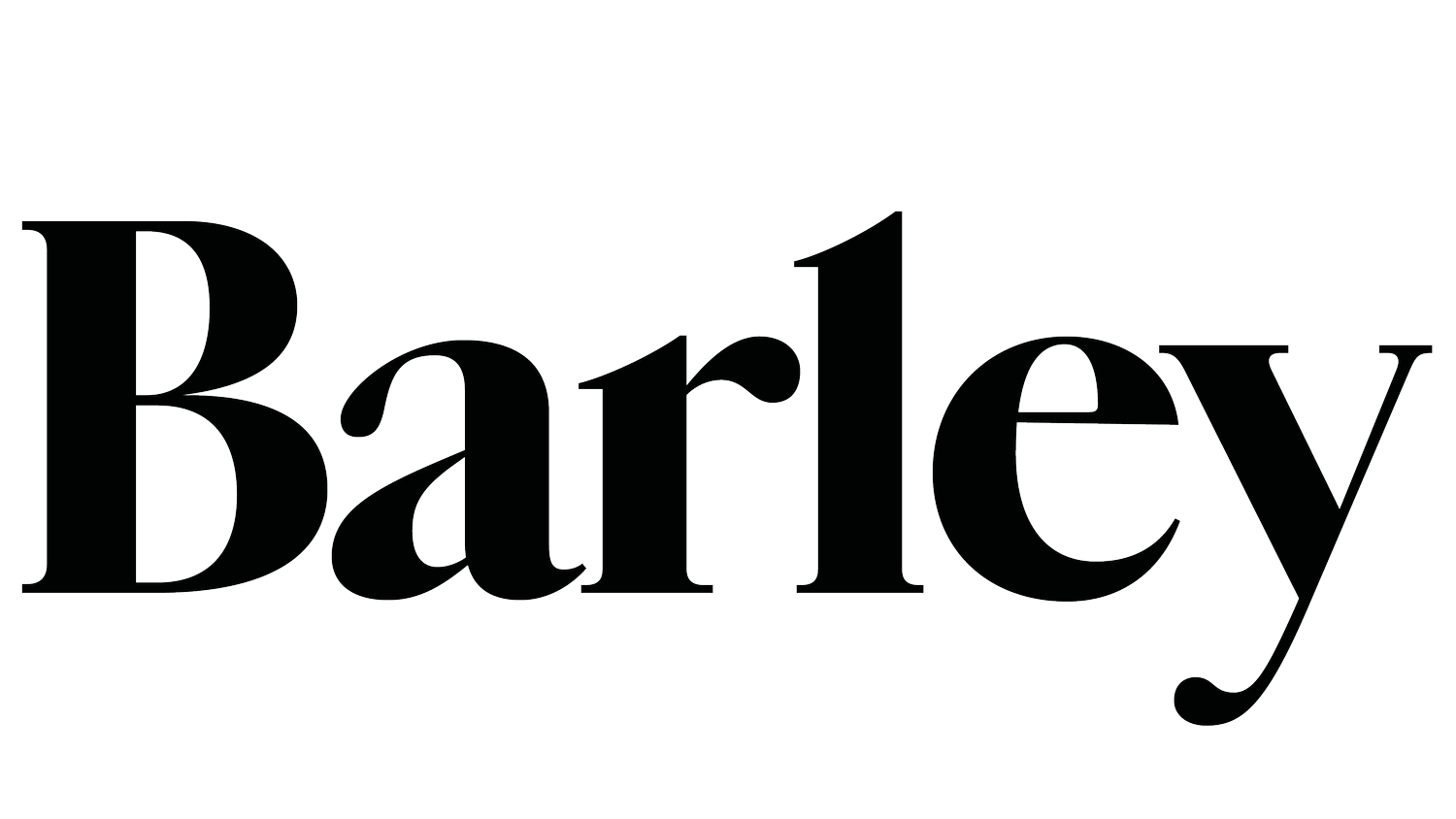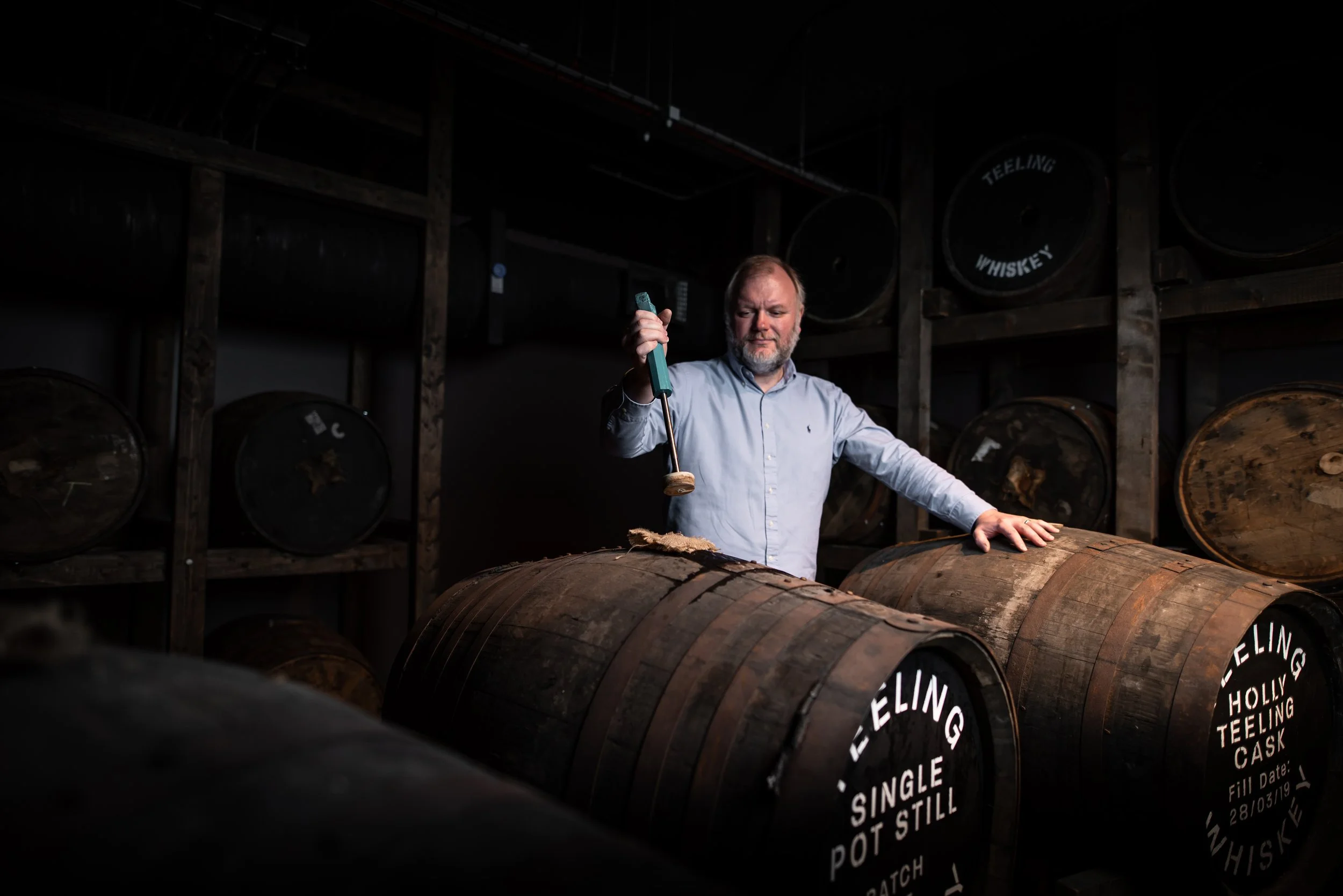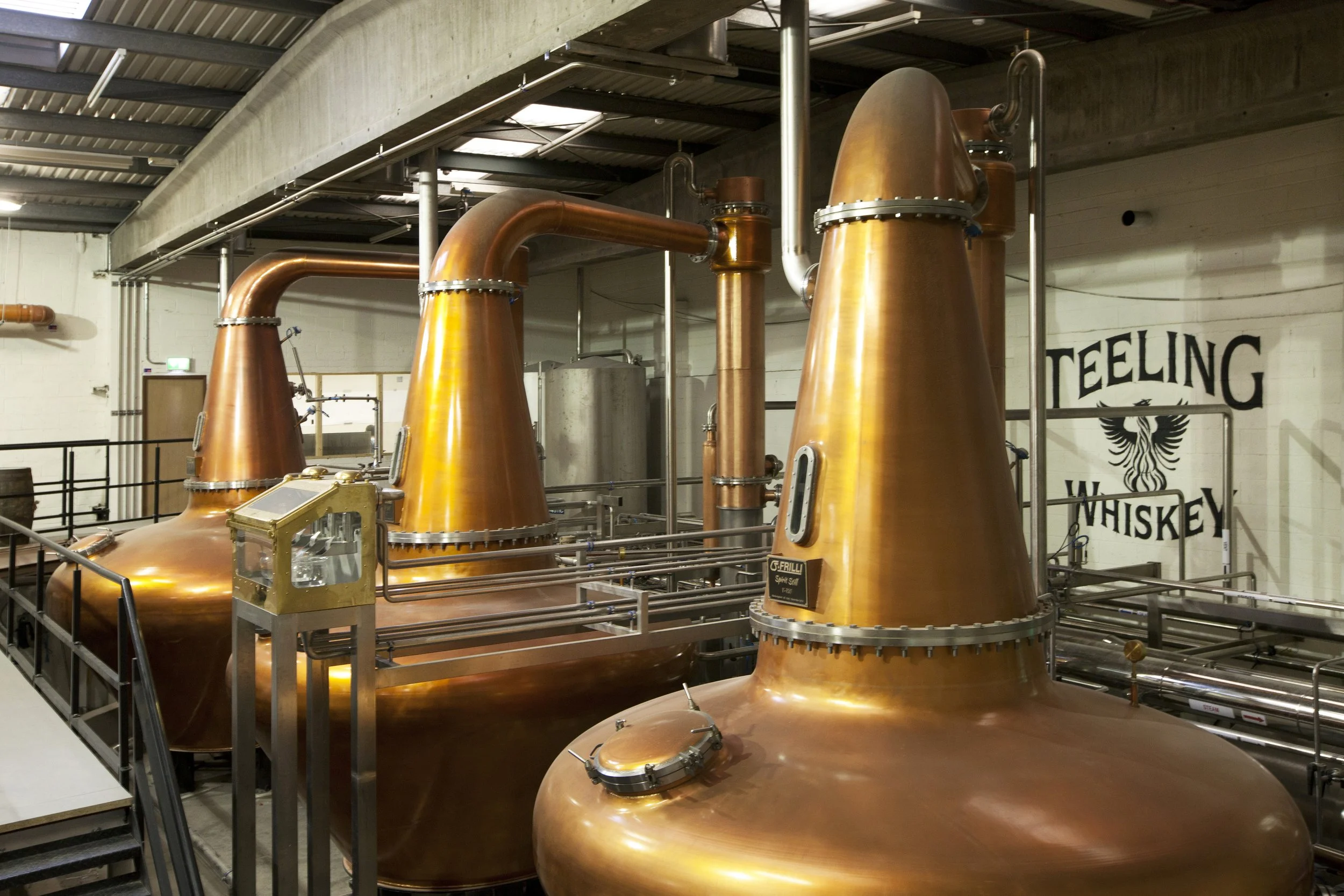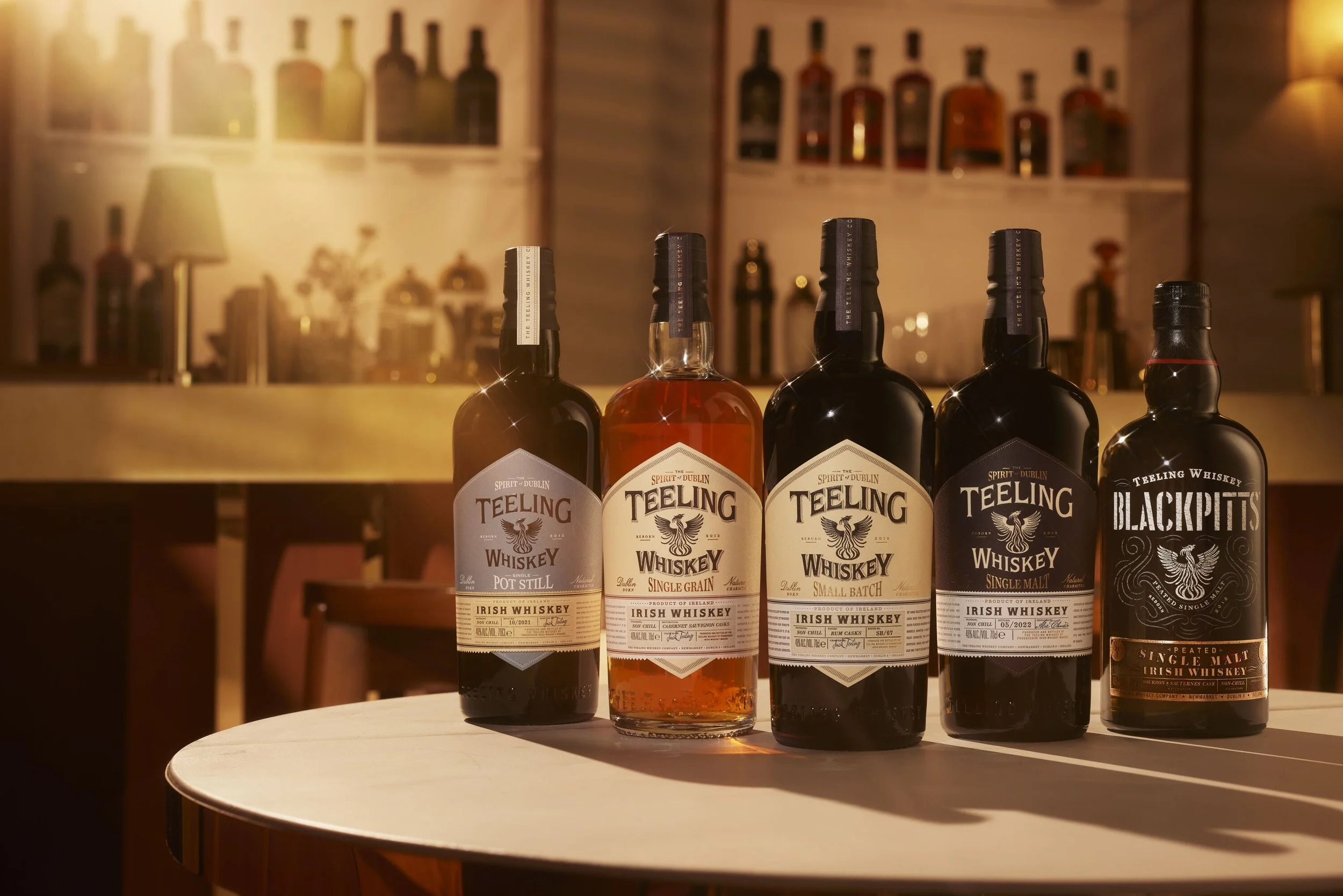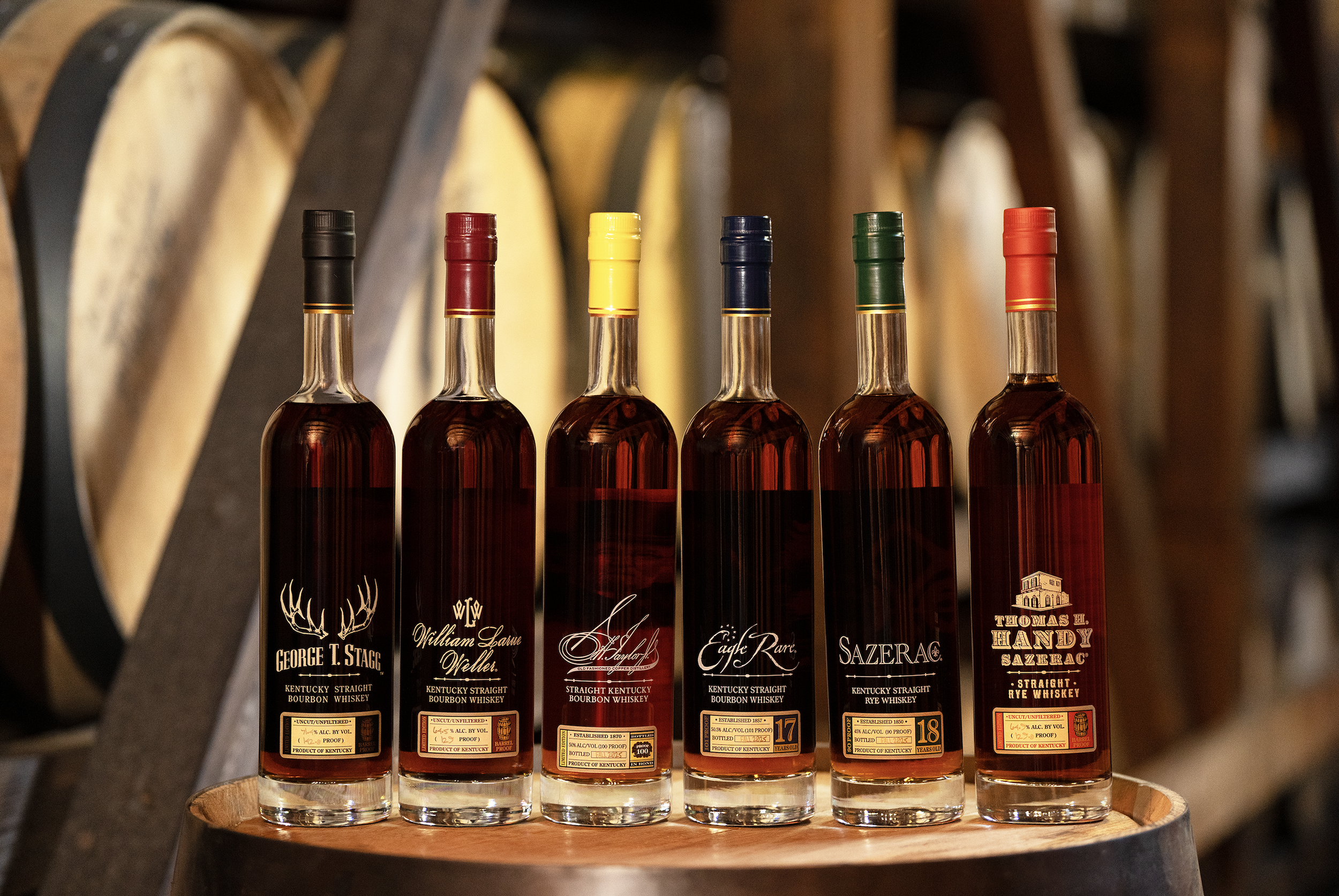How Teeling fired up Dublin whiskey again
In the heart of Dublin’s Liberties, the Teeling brothers have rekindled a family flame that first burned in 1782. Gordon Thomson went to find out how they did it
When Teeling switched on its stills in Dublin’s Liberties in 2015, it wasn’t just making whiskey again – it was bringing the city’s spirit back home. For almost forty years, the capital that had once been the beating heart of Irish distilling hadn’t produced a drop. The last stills were silenced in 1976, their copper gutted or gone, their warehouses turned to offices or flats. Then, in a quiet backstreet of the Liberties – the same area that once hummed with grain mills and the heady whiff of malt – a new distillery rose, glass-fronted and unapologetically modern.
“It was the core of the vision,” says Jack Teeling, the convivial founder and CEO, sitting back in the distillery’s elegant tasting room. “We wanted to do something more modern from a liquid point of view, but we also wanted to go back to where our origins were – and that was in the heart of Dublin.”
The family that refused to leave whiskey
The Teeling name has been tied to Dublin whiskey since 1782, when the family first distilled in Marrowbone Lane, in what was then a dense cluster of maltings, breweries, and spirit stores. That long lineage was broken when industrial consolidation shuttered the city’s last stills, but it was rekindled in the 1980s by John Teeling, Jack’s father, who founded the Cooley Distillery to challenge the state-sanctioned monopoly of Irish Distillers.
Family affair: Stephen, left, and Jack Teeling
From Cooley’s independent spark came a second generation of whiskey men. Jack joined the business in the early 2000s, later joined by his brother Stephen Teeling – now company director. Together they saw the first flickers of a global Irish whiskey revival and felt the industry needed something with a sharper modern edge. When Cooley was sold, the brothers decided to start again – on their own terms and on their own soil. “If I was ever going to do it,” Teeling says, “I wanted to revive the name in the city centre, and bring that kind of modern energy to a very traditional category.”
The result was Dublin’s first new distillery in 125 years – a family-owned venture designed not to mimic the past but to move it forward.
A city built on spirit
Teeling loves to remind visitors that Dublin whiskey was never a pastoral thing. “A lot of people think of whiskey as a rural industry,” he says. “But Irish whiskey evolved around ports – Dublin, Cork, Belfast. The grain came in by canal, the water was under the city, and the whiskey could be shipped out to the world.”
By the mid-1800s there were more than 40 distilleries in and around the Liberties. Dublin whiskey had a global reputation for quality: smooth, consistent, and beautifully exportable. For over a century, it dominated. Then came the fall – a tangle of revolution, trade embargoes, Prohibition, and religious conservatism – all compounded by Dublin’s own reluctance to adopt the new continuous Coffey still that ended up being to their rival Scotland’s gain.
When the Irish government convinced the remaining families – Jameson, Powers, and Cork Distillers – to merge and build a new site in rural Midleton, the city’s fire went out. “I was born the year it disappeared,” Teeling says. “All that heritage of making spirit in the city centre, gone.”
Even the ground around today’s distillery holds memories. In 1875, the Great Dublin Whiskey Fire began just a few hundred metres away, when a bonded warehouse erupted and flaming rivers of spirit ran through the streets. “People still bring it up,” Teeling laughs. “When we were applying for planning permission, some locals thought we were going to set the place on fire again.”
Building a modern Dublin distillery
The new Teeling Distillery isn’t a recreation of a Victorian plant. It’s an architectural statement: open, bright, and urban. The three copper stills were made by Forsyths of Speyside and named after Jack’s three children: Alison (the wash still), Natalie (the intermediate still) and Rebecca (the spirit still). They sit under a high roof of glass and steel, every valve and coil visible from the visitor walkway. “We wanted to show that this is 21st-century Dublin whiskey,” says Teeling. “We weren’t pretending to be something old.”
For that vision to work, he needed a kindred technical mind. Alex Chasko, an American-born brewer turned distiller, became Teeling’s first employee and its master distiller. “In Ireland there’s a freedom,” Chasko tells me as we pass in front of the stills. “Scotland has an established industry and established brands, which is great – but here, because we were rebuilding, we could ask: what else can Irish whiskey be?”
Alex Chasko, master distiller
Chasko designed the still house like a modern brewery, borrowing the precision and efficiency of German beer engineering. “We said: there’s another industry that knows barley,” he laughs. “Why not learn from them? We went down to Munich, looked at how they were doing it, and brought that thinking back.”
He’s sceptical of the industry’s obsession with nostalgia. “You hear people talk about putting dents in new stills to match the old ones,” he says. “I asked Richard Forsyth about that, and he said: ‘Alex, that still costs the same as a Porsche. If you bought a new Porsche, would you put a dent in it?’” What matters, Chasko argues, isn’t the dent – it’s the detail: “We’ve engineered the stills so we can track steam levels, temperatures, densities – all in real time. That drives flavour far more than the angle of a lyne arm.”
Alison, Natalie and Rebecca
The art of separation
If Scotland’s double-distilled malts are a matter of rhythm, Ireland’s triple distillation offers counterpoint – more notes to play. “Distillation is separation,” says Chasko. “You’re deciding what to send forward and what to hold back.”
In Teeling’s process, the first run pulls alcohol from yeast and grain; the second and third refine and balance. “In our middle still we found that cutting around 50% gives us the best balance – good spirit, holding back the harsher fusel oils,” Chasko explains. “Then on the spirit still, we run up to about 84% but we cut at 80%. It’s only four per cent, but that’s a big volume, and that’s where you shape the character.” The approach yields a spirit that’s clean yet robust – a modern echo of the full-bodied Dublin style.
Innovation as family tradition
The Teelings’ gift, across three generations, has been their refusal to stand still. From John’s breakaway Cooley experiment to the brothers’ reboot of Dublin distilling, innovation has always been a family value. “Cask finishing was the clear way to differentiate,” says Chasko. “We tried sherry, port, rum, Sauternes, even white wine casks. But that only gets you so far. Then you start playing with grains, yeasts, cut points – pushing the process itself.”
Teeling’s range of expressions is bold and characterful
That attitude shaped Teeling’s portfolio. Its Small Batch – a rum-finished, 46%, non-chill-filtered blend – remains its signature. Around it orbit the Single Grain, Single Malt, and Single Pot Still whiskeys, each with its own twist. Above those sit the limited “Wonders of Wood” and collaborative releases: German wineries, Belgian breweries, Lithuanian craft makers – creative crossovers that connect old whiskey to new culture.
The brothers also curate the Vintage Reserve range, drawn from older stocks inherited from their father’s Cooley years, giving collectors proof that the Teeling name has always been about liquid quality as much as storytelling.
Teeling admits that in the heady growth of the 2020s they may have been too inventive. “Everyone wanted something new,” he says. “We were flying, and suddenly there was too much on the shelf.” The current focus, he says, is cadence and clarity: “Innovation that brings people along, not confusion.” Still, curiosity remains the family’s currency.
New drinkers, new Dublin
If the Liberties is where Teeling makes whiskey, Dublin itself is where it sells the idea of it. The brand’s identity – black glass, urban mural, neon phoenix – is aimed as much at the whiskey-curious generation as at old-guard collectors. “There’s a missing generation in Irish whiskey,” Teeling says. “For my age group it wasn’t cool – it was your dad’s drink. Now you go to shows and there’s the older crowd, but there’s also a new, younger, more diverse audience.”
That’s why every Teeling tour ends not with a lecture but with a cocktail. “If people enjoy whiskey in a cocktail, they’ll start asking questions,” he says. “It’s about openness and discovery.” This inclusive approach has made the distillery one of Dublin’s most visited and has helped the brand become the local pour in the city’s top bars.
The company has also been clever in how it markets itself abroad. Through strategic sponsorships – including hospitality partnerships around American football events in Dublin – Teeling ensures that when international visitors descend on the city, the whiskey in their glass has a local story to tell. It’s an elegantly commercial way of reminding the world that Dublin once ruled the whiskey trade – and might yet again.
Built for the long run
Because the distillery was built from scratch, sustainability could be embedded from the start: efficient water use from its own well, solar energy, high-recycled-content glass, and space to retrofit future green tech. “We designed it to be as self-sufficient as possible,” says Teeling. “When you start new, you can think that way.”
That forward thinking extends to business partnerships. With Bacardi now holding a minority stake, Teeling has gained access to a global network that can help the brand reach further into key markets like the United States, while still remaining a proudly independent family operation in ethos and control.
A phoenix in copper
For all its modern sheen, Teeling’s success feels old-fashioned in one way: it’s a family affair grounded in craft. Three generations, one name, one belief that Dublin whiskey could rise again. When the distillery’s 24-year-old single malt won World’s Best Single Malt in 2019, even Scotch purists took notice. “It made people stop and say, ‘There’s something going on in Irish whiskey,’” says Teeling.
That, ultimately, is how Teeling is firing up the Dublin whiskey scene – not by pretending it’s 1875 again, but by doing what Dublin always did best: taking its past, distilling it through invention and ambition, and bottling a spirit that speaks to the world. The phoenix on the label is more than marketing. It’s what the family actually did.
